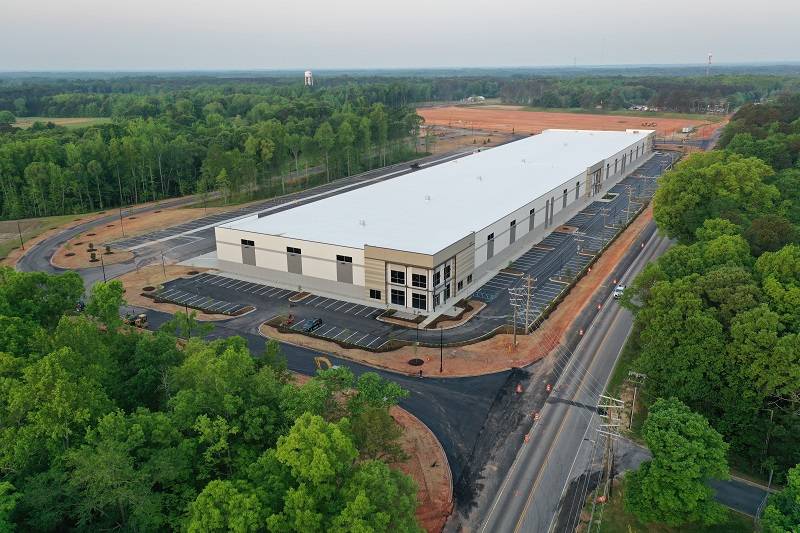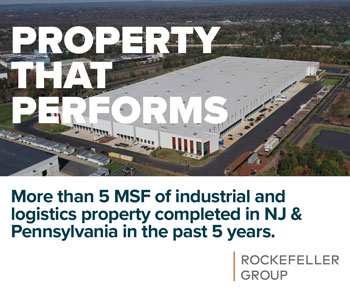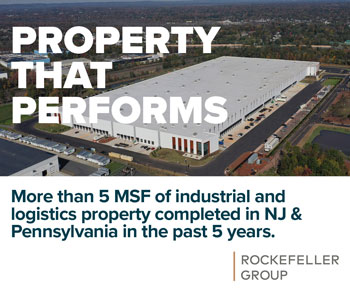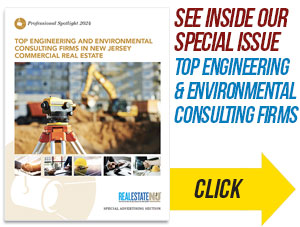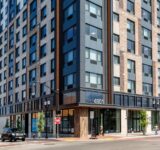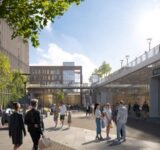Sudler Cos. recently delivered a 206,140-square-foot manufacturing and distribution center in Fountain Inn, South Carolina, the first piece of its planned 2.5 million-square-foot Fox Hill Business Park. The project has used a carbon-reducing concrete technology known as CarbonCure, as the developer seeks more sustainable development solutions. — Courtesy: Sudler Cos.
By Marlaina Cockcroft
One way to reduce the carbon footprint of the construction process, according to Sudler Cos., is to use concrete that locks carbon away for good. That’s why the Chatham-based company is using a technology known as CarbonCure to build a new industrial park in South Carolina.
The carbon-injected concrete wins praise from others in the industry and, while such materials may not be available in New Jersey yet, could be a sign of things to come for builders.

“We’re seeking more sustainable development solutions moving forward,” said Brian Sudler, a principal with Sudler Cos. “We think it’s the right thing to do, and we think it’s our responsibility to find sustainable development techniques.”
Concrete is one of the largest greenhouse gas emitters in the world, Sudler noted. According to CarbonCure’s website, every pound of regular cement emits about a pound of carbon dioxide, while CarbonCure concrete reduces CO2 by an average of 25 pounds per cubic yard. It does so by injecting carbon dioxide waste collected from other industries into wet cement mix, forming a mineral known as calcium carbonate that makes the concrete stronger, according to the company.
The process intrigues Jason Kliwinski, an architect and principal at Designs for Life in Lambertville, though he hasn’t used it yet.

“The technology looks very stable and very good,” Kliwinski said.
Carbon sequestering in concrete isn’t new, he said. More common is to use supplemental waste materials like slag, a byproduct of steel production, or fly ash, the residue from burning pulverized coal, to reduce the amount of mined Portland cement in concrete. It’s a “different approach but basically the same results” as CarbonCure’s method, he said.
He noted that CarbonCure calls the carbon dioxide it uses a “refined CO2 ,” meaning that other greenhouse gases such as methane or nitrous oxide may have been stripped out. “There’s a byproduct somewhere,” he said. CarbonCure didn’t respond to a request for further comment.
Kliwinski, also on the board of the state chapter of the U.S. Green Building Council, said he tries to minimize the use of concrete. He added that not everyone focuses on the environmental impact of constructing a building.
“When you take into account all of the extraction, harvesting, shipping, manufacturing, installation that goes with building products, that carbon footprint far outweighs the operational carbon footprint of a building,” he said, so products like CarbonCure’s could prove useful.

Kayla Reddington, a regional sustainability manager for New York-based Turner Construction Co. and board member at USGBC New Jersey, said CarbonCure is among the materials Turner has been researching to reduce carbon in concrete. Others include ground-glass pozzolan, which is made from recycled glass, and Blue Planet’s synthetic limestone, which captures carbon dioxide emissions from various industries as well as from the atmosphere.
The challenge, she said, is that ready-mix suppliers will have to test each mix to make sure it meets specifications, which isn’t a quick process. And New Jersey, unlike states such as California, doesn’t set carbon requirements for projects.
That could change. Two state Assembly bills under consideration would set a purchasing preference for so-called low-embodied-carbon concrete and offer tax incentives for concrete products that use carbon-reducing technology.
Reddington said clients need to request carbon-reducing materials so that suppliers can respond to demand. In the meantime, Turner is always looking to improve its sustainability.
“We look forward to those clients asking for those changes, because that really helps us push our initiatives,” said Reddington, who is based in the company’s Somerset office.
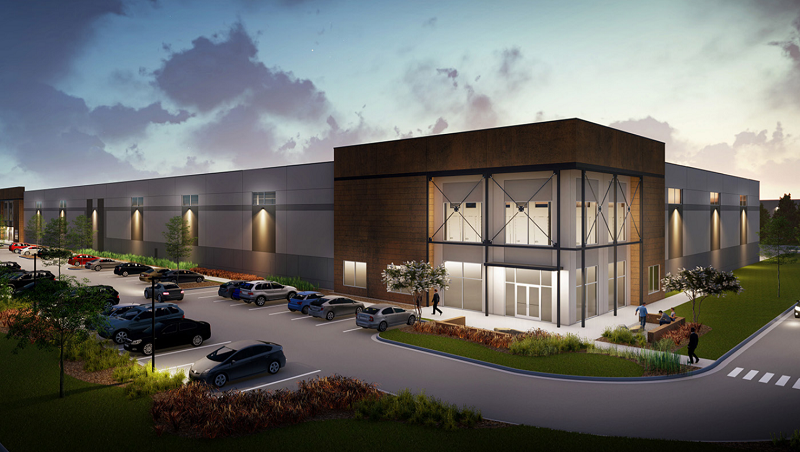
Sudler Cos. touted its commitment to ecofriendly construction techniques this past spring when it unveiled a 206,140-square-foot manufacturing and distribution center in Fountain Inn, South Carolina, the first piece of its planned 2.5 million-square-foot Fox Hill Business Park. According to Brian Sudler, the firm used CarbonCure after learning of it from the Drawdown Fund, which invests in sustainable businesses.
The product looks and finishes like regular concrete with no difference in cost, he said, adding that the subcontractor on the project called it some of the easiest he’d ever worked with. Thomas Concrete, the local supplier, is located near the project site, which saved on transportation costs as well, he said.
The developer mostly works in concrete and steel, so those are the areas where it looks for sustainable options. He added that the company already uses solar energy on its rooftops and looks for sustainable HVAC solutions for existing buildings. The concrete is the biggest focus right now, “because we know it works,” he said.
According to CarbonCure’s website, the ready-mix product is used in more than 300 concrete plants around the world. There are no CarbonCure producers in New Jersey yet, but Sudler said the company is looking into using the concrete locally.
One hurdle, he said, is that the concrete hasn’t been widely accepted.
“Sudler is interested in using our cases as examples of how it can be successful,” he said, and he’s hoping other companies follow its lead. “We all have a responsibility to reduce emissions, and locking away carbon is a way to do that.”
Sudler unveils first piece of South Carolina business park, using eco-friendly concrete tech

